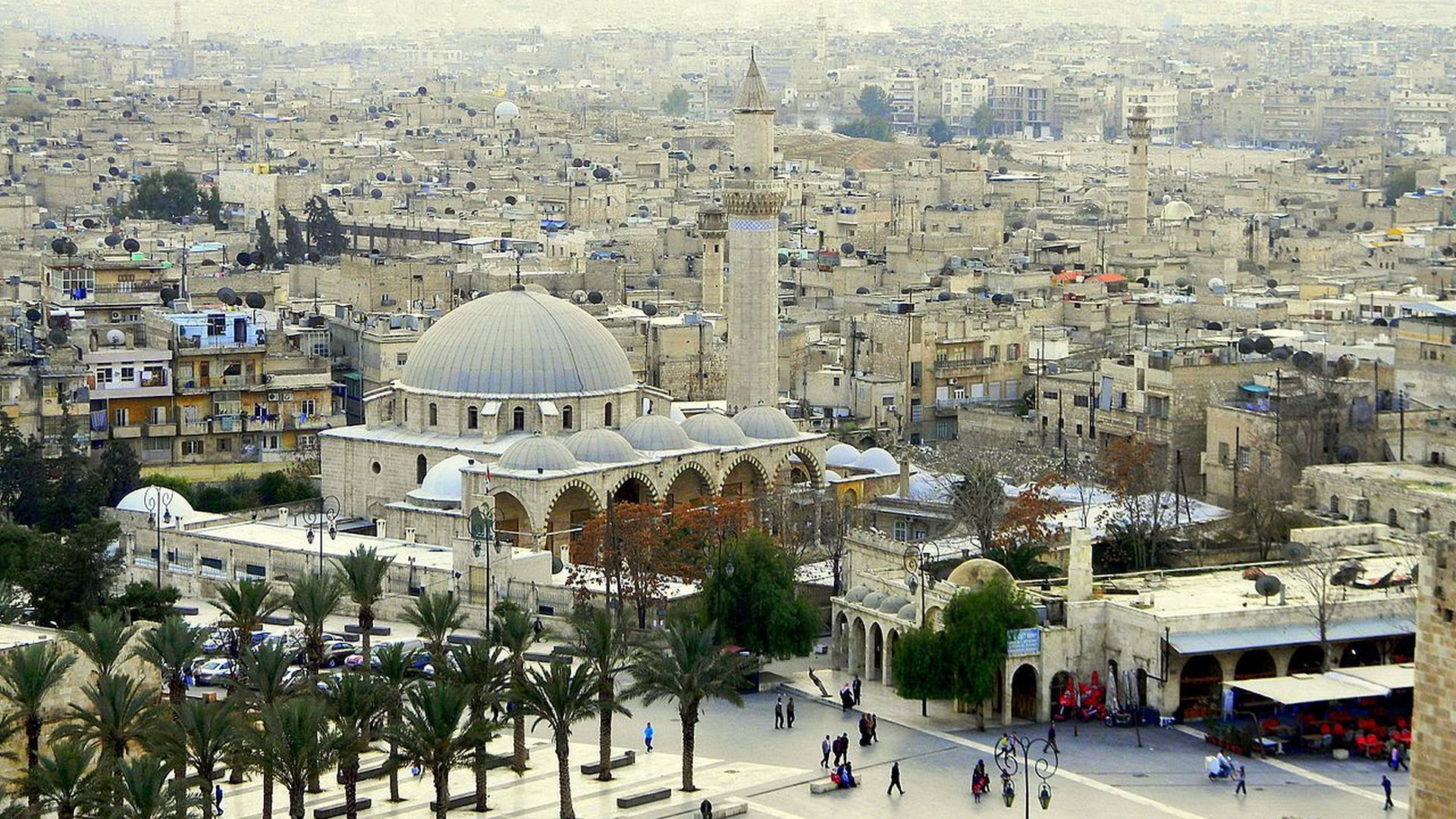Description
Property Name: Husrev Pasha Mosque
Inventory No: 963-21-3
Date of infill of the inventory form: 2008-02-29
Country (State party): Syria
Province: Aleppo
Town:
Geographic coordinates: 36° 11′ 48.96″ N
37° 9′ 37.7″ E
Historic Period: Classic Ottoman (1453-1579)
Year of Construction: 1536-1546
Style: Classical Ottoman
Original Use: Mosque
Current Use: Mosque
Architect: Architect Sinan
Significance
Husrev Pasha Complex occupies a commercially important location at the southeast of the main route of Aleppo’s commercial center, which lies between the citadel and one of the city gates, Bab Antakya. It consists of a mosque, a madrasa, a public kitchen, guest rooms, a qaysariyya, a caravanserai, a souk, and a large number of shops on a five-hectare plot. The Husrev Pasha Mosque is among the important buildings of Architect Sinan. Its plan is similar to the Sultan Selim mosque in İstanbul.
Selection Criteria
iv. to be an outstanding example of a type of building, architectural or technological ensemble or landscape which illustrates (a) significant stage(s) in human history
v. to be an outstanding example of a traditional human settlement, land-use, or sea-use which is representative of a culture (or cultures), or human interaction with the environment especially when it has become vulnerable under the impact of irreversible change
State of Preservation
Between 1998- 2003, Intensive restoration works were done in the mosque and several parts of the complex.
In 2014, except for the northern portico, the entirety of the complex was destroyed. The mosque at the center of the complex appears to have been demolished by explosives, which caused the building to cave in, and all that remains is a large crater.
Al-Khusrawiyya complex was of exceptional historical importance as the first Ottomanstyle complex in Aleppo, which had brought a completely new architectural and urban style to the city. It was considered one of the early works of Mimar Sinan that combined the Ottoman style with local building techniques and materials. The architectural and decorative elements of the mosque, the magnificent portal, the ceramic tiles above the windows, the mihrab, and the minbar in the prayer hall were all valuable examples of this combination. Taking these points into consideration, the overall historical loss is categorized as critical (Kasmo, 2018).
References
Bloom, Jonathan M.; Sheila S. Blair. The Grove Encyclopedia Of Islamic Art and Architecture, Oxford University Press, New York, 2009.
Burns, Ross. Monuments of Syria: An Historical Guide, I.B. Tauris Publishers, London and New York, 1999.
Kasmo, Ruba. FIVE YEARS OF CONFLICT: The State of Cultural Heritage in the Ancient City of Aleppo, United Nations Educational, Scientific and Cultural Organization, 7, UNESCO / UNITAR, 2018.
Michell, George. Architecture of the Islamic World: Its History and Social Meaning. Thames and Hudson, London, 1978.
Kuran, Aptullah. Sinan: The Grand Old Master Of Ottoman Architecture, Institute of Turkish Studies, Inc., Washington D.C. ; Ada Press Publishers, Istanbul, 1987.
Necipoğlu, Gülru. The Age of Sinan, Reaktion Books Ltd, London, 2005.
Kuran, Aptullah (ed). Mimarbaşı Koca Sinan Yaşadığı Çağ ve Eserleri (2 Volumes), Başbakanlık Vakıflar Genel Müd ürlüğü, Istanbul, 1988.
Burelli, Auguto Romano. La Moschea di Sinan, CLUVA Editrice, Venice, 1988.
Aslanapa, Oktay. Mimar Sinan’ın Hayatı Ve Eserleri, Kültür Bakanlığı, Ankara, 1992.
Parisi, Nicola. Design And Construction Of The Ottoman Domed Space, Poliba pres, Bari; Aracne, Rome; 2008.
Vogt-Göknil, Ulya. Mimar Sinan, Sandoz Kültür Yayınları, Istanbul, 1987.
Egli, Ernst. Sinan: Der Baumeister Osmanischer Glanzzeit, Verlag fur Architektur, Erlenbach, Stuttgart, 1954.


